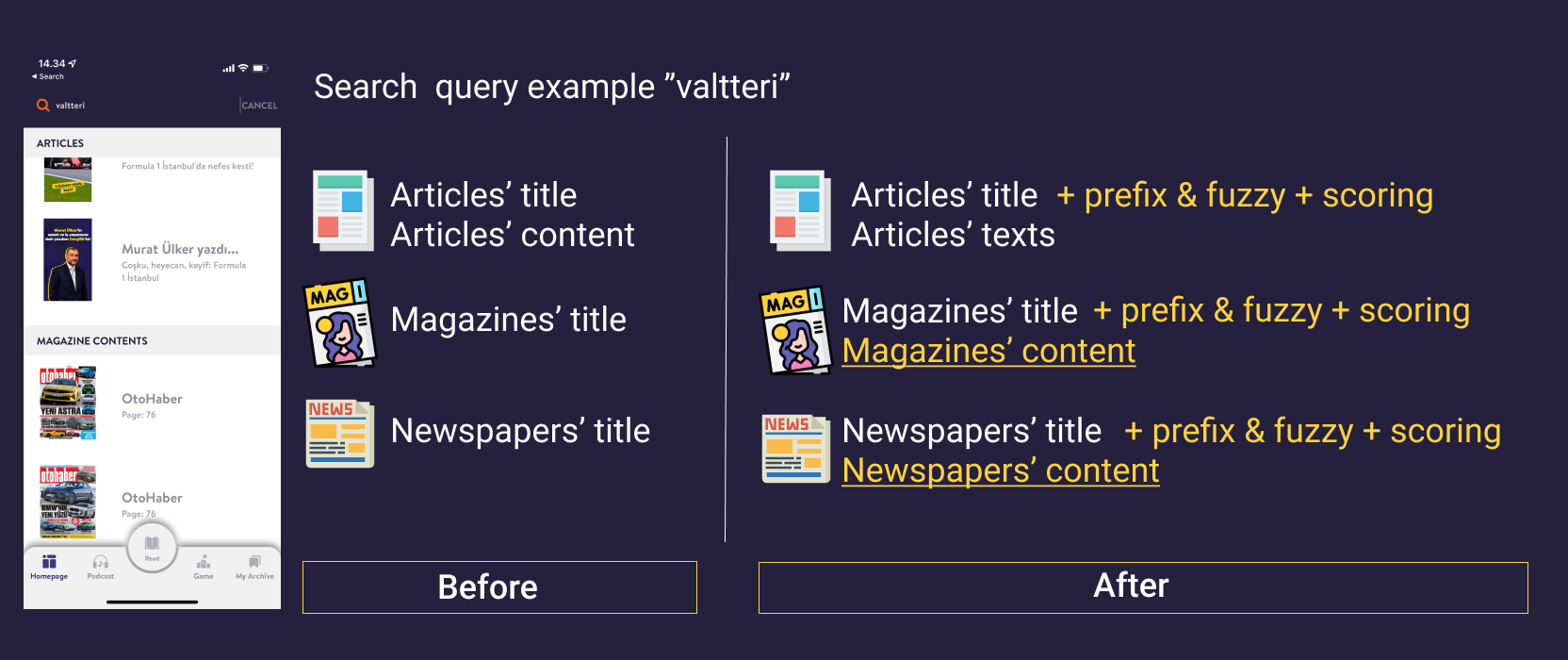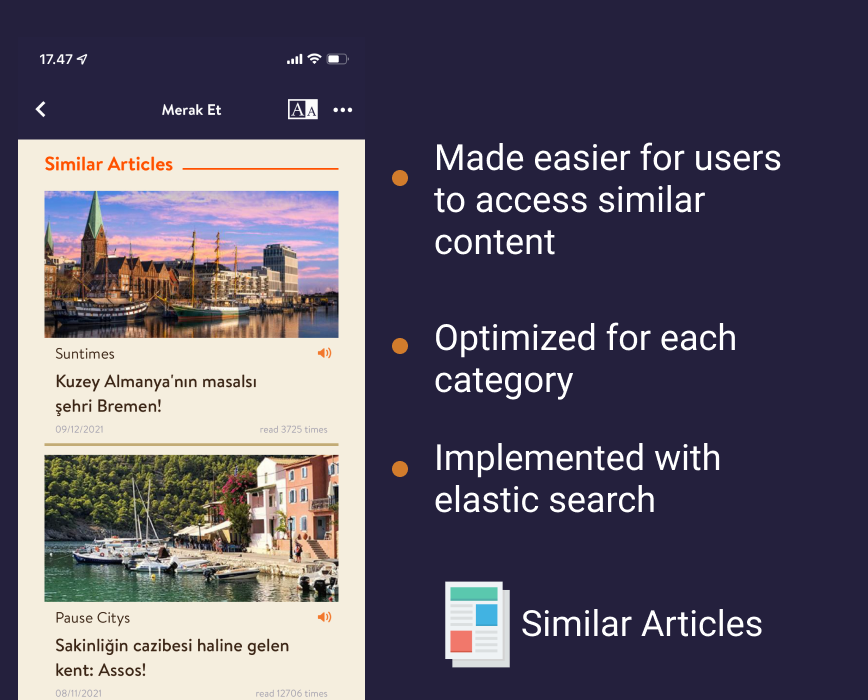

Dergilik, a content platform established in 2011, faced a growing business challenge: user search. Our aging search infrastructure was hindering user engagement and content discovery. From a product perspective, this translated to lost opportunities for content consumption and potentially lower user retention. Imagine a user, actively seeking specific news, typing keywords and encountering frustratingly irrelevant or empty result pages. This was the daily experience for many Dergilik users, directly impacting their satisfaction and our platform’s value. User experience analysis quantified this, revealing significant issues — users struggled to find desired content, often failing completely. The data clearly indicated a critical need: a strategic product initiative to dramatically overhaul the search experience and unlock the full potential of our content library.
The strategic objective became clear: revolutionize content discovery and enhance user engagement through a superior search experience. The chosen solution was the development of a new search engine for Dergilik, leveraging Elasticsearch. For me, as a key team member on this initiative, this was a significant opportunity and a steep learning curve. My technical background provided a solid base, but my manager’s deep Elasticsearch expertise and strategic vision were invaluable. He articulated the potential impact of improved search — not just faster results, but a fundamental shift in how users interacted with Dergilik. His vision underscored the business value of this project and was a primary driver for my commitment. Eager to contribute to this impactful initiative, I dedicated myself to mastering Elasticsearch. The initial learning phase presented challenges, but through focused effort, I quickly developed the necessary skills. Building a cloud-based sandbox with Dergilik data and seeing it deliver relevant results was a pivotal moment, solidifying my readiness to drive this project forward.
We approached implementation strategically with a phased plan. From a risk mitigation perspective, our first step was to replicate the existing search functionality on the new infrastructure. This ‘lift and shift’ approach provided a stable foundation for testing, performance monitoring, and minimized immediate disruption to the user experience. Gaining robust production environment monitoring capabilities was also crucial for ongoing optimization. I want to specifically acknowledge Derya’s critical role in enabling this monitoring infrastructure. Her expertise and collaborative approach were instrumental throughout the project. In fact, her consistent ownership, problem-solving skills, and team-oriented approach have been invaluable across numerous Dergilik projects, making her an exceptional asset to the team.
Understanding the existing user search behavior was essential. Users could search article titles, magazine/newspaper names, and article text. However, the limitations were significant: lack of prefix and fuzzy search directly hampered usability. Even minor typos resulted in zero results, effectively locking users out from relevant content and creating a negative user experience that impacted product satisfaction.
Our first phase with Elasticsearch prioritized backend stability. This was a conscious product decision to de-risk the migration. By initially mirroring the old search, we focused on validating the new architecture, rigorously testing Elasticsearch performance, and proactively identifying potential issues — all before introducing any user-facing changes. This phased approach was crucial for ensuring a smooth transition and minimizing user disruption.

Phase two directly addressed user needs and focused on delivering tangible user-facing improvements. We prioritized three key feature enhancements:
The subsequent phase expanded content coverage and search depth. Full-text search across newspapers and magazines was implemented. This strategic expansion unlocked a vast amount of previously unsearchable content. Users could now effortlessly locate specific mentions within article text, dramatically increasing the utility of search for niche topics and detailed information retrieval.
Finally, and importantly for long-term user engagement, we launched “Similar Articles.” This feature went beyond basic search, proactively promoting content discovery and personalized user journeys. By providing recommendations based on reading habits, “Similar Articles” fostered deeper exploration and increased time spent within the Dergilik platform. This feature directly supported our goals of increased user engagement and content consumption.
The Dergilik search engine overhaul has been a successful product initiative with demonstrable impact. By strategically leveraging Elasticsearch and adopting an iterative, user-centric approach, we have not only modernized our technology stack but fundamentally enhanced content discovery and user satisfaction. While specific performance metrics are internal, we observed a significant positive shift in user engagement metrics and overwhelmingly positive user feedback, indicating a clear ROI for this product investment. Looking ahead, we are committed to continuous improvement, leveraging user data and exploring advanced features to ensure Dergilik’s search remains a key differentiator and driver of user value in the competitive digital content landscape.
